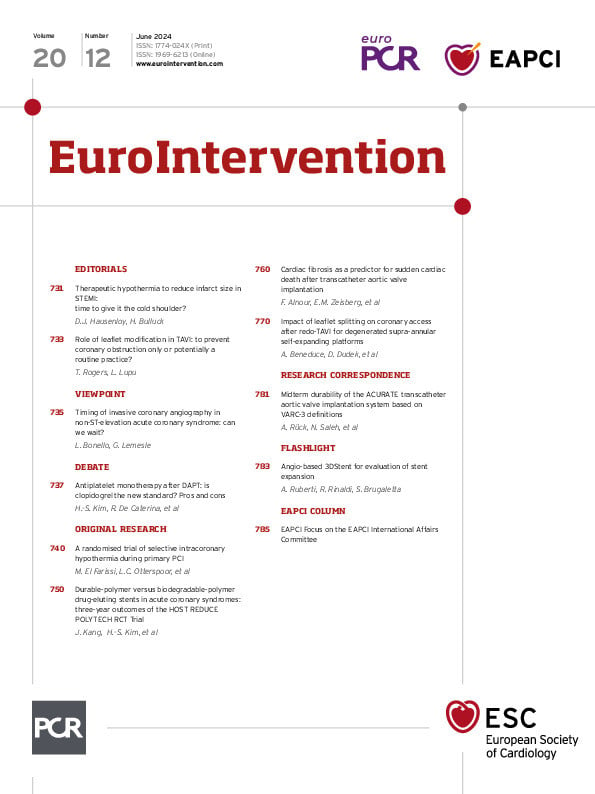As spring turns to summer here in the Northern Hemisphere, EuroIntervention continues to bring you a wide range of novel research to help keep you going throughout the new season. From reducing infarct size to redo-TAVI and acute coronary syndromes⦠join us and find what you’re looking for!
Intracoronary cooling to reduce infarct size
In the EURO-ICE trial, Mohamed El Farissi, Luuk C. Otterspoor and colleagues investigate selective intracoronary hypothermia during primary percutaneous coronary intervention (PCI) in patients with large anterior wall ST-segment elevation myocardial infarction. Although it proved to be both feasible and safe, it had no impact on infarct size compared with standard primary PCI.
Long-term comparison of polymer technology in ACS − the HOST REDUCE POLYTECH ACS Trial
Jeehoon Kang, Hyo-Soo Kim and colleagues follow the polymer degradation of durable-polymer drug-eluting stents (DES) and biodegradable-polymer DES in a population of acute coronary syndrome patients over a 3-year follow-up period. Despite similar patient-oriented outcome rates between stents, the device-oriented outcome rates were lower in the durable-polymer DES arm, driven by target lesion revascularisation events that occurred during polymer degradation.
Fibrosis pattern as a prognostic tool post-TAVI
Fouzi Alnour, Elisabeth M. Zeisberg and colleagues probe whether histological assessments of focal and diffuse cardiac fibrosis patterns may have a prognostic role in predicting sudden cardiac death in aortic stenosis patients after transcatheter aortic valve implantation. Their research emphasises that having a detailed understanding of fibrotic changes in the left ventricular wall could help in the planning of individualised treatment strategies.
Leaflet splitting for coronary access after redo-TAVI
Using an ex vivo simulation, Alessandro Beneduce, Dariusz Dudek and colleagues determined that leaflet splitting can increase coronary access after redo- transcatheter aortic valve implantation for degenerated supra-annular self-expanding platforms in high-risk anatomies. They found that the efficacy of leaflet splitting is influenced by the combination of the sinotubular junction height, the index valve design, commissural misalignment, and the implantation depth of the second valve.
Midterm durability of the ACURATE neo TAVI system
Using Valve Academic Research Consortium-3 definitions, Andreas Rück, Nawzad Saleh and colleagues followed patients who received the first-generation ACURATE neo TAVI system between October 2015 and December 2018, with study endpoints including haemodynamic valve deterioration, bioprosthetic valve failure and patient-prosthesis mismatch, and an echocardiographic follow-up up to March 2023. Primary valve failure of the ACURATE neo was similar to that of the CoreValve system, though the primary mode of failure was acquired stenosis.

